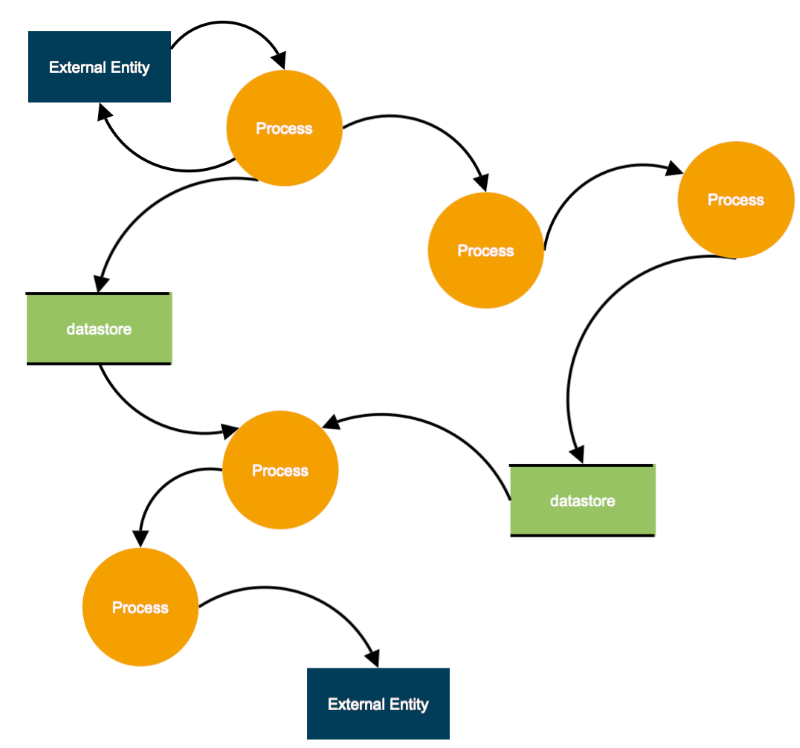Navigating the New Norms: Global Trends in Digital Platform Regulation
As a digital sherpa, I’ve seen it all. New rules are taking shape worldwide, changing how platforms work. From Europe to Asia, these changes affect us all. Today, I’ll walk you through what’s going on with global trends in digital platform regulation. Get ready for a deep dive into this complex world. We’ll look at the mixed bag of rules that govern our daily clicks and scrolls. Fasten your seatbelts; it’s time to unpack the regulatory jigsaw puzzle that’s setting the stage for tomorrow’s digital landscape.
Understanding the Global Patchwork of Digital Regulation
International Digital Governance Models
Take a trip around the world with me. We’ll see how different places tackle “digital governance”. Pretty fancy words, right? But, it’s all about rules for the digital space. And trust me, it’s like a giant puzzle.
In Europe, they take privacy super seriously. They’ve got strict rules where you need to say “okay” before someone uses your data. Across the ocean, the US chases big tech giants. They don’t want one company to have all the power. So, they use “antitrust laws” to keep things fair.
Asia and Latin America are stepping up their game, too. They’re making new rules as fast as tech changes. They want to make sure their citizens are safe online.
Tech Platforms Regulatory Frameworks
Now, let’s chat about how big tech companies have to follow these rules. Each country’s got its own set, so it’s like tech companies are playing different sports at once!
“Cross-border data flow” means your info can go around the world in a blink. But some places say, “Hold up, not too fast!” They set up rules to keep data inside the country.
The EU’s got this thing called the “Digital Services Act”. It makes online places safe for buying and hanging out. It says if you’re selling stuff or running a social media site, you must play by the rules.
And we can’t forget about “content moderation”. That’s a way to make sure things stay cool and okay on the internet. Everyone wants to be safe when they’re online. So, each place has its own do’s and don’ts for what you can share.
Safety online also means keeping your “digital privacy”. Lots of countries compare notes to protect us better. They look out for things like who’s tracking us and how our info is used.
This patchwork, or mix, of rules is hard for tech companies. They have to check what’s okay in each place they work. It’s not easy, but it helps keep the digital world better for everyone.
In this big puzzle, “international cooperation” helps put the pieces together. When countries talk and work together, they can come up with rules that make sense for everyone.
So, even though it’s a bit messy, this patchwork shows how we all want a safe and fair digital world. By working on this together, we can keep the cool stuff about tech and say “no thanks” to the not-so-cool stuff.
The European Union’s Bold Moves in Digital Space
EU Digital Services Act Impact
The EU has made big moves online. Its new rule, the EU Digital Services Act, really shifts things for big tech platforms. It sets rules on how they must act. They now have to check what’s sold online more strictly. They also must be open about how they sort and show content to folks. This means safer online spaces for users and playing fair for business.
This Act affects how platforms control speech and deal with illegal stuff online. They must take down harmful content fast. But, they also have to protect user rights. It’s a big step for digital rights and safety. Plus, it helps smaller companies compete with giants like Google and Facebook. This rule might become an example for others worldwide.
Implications of GDPR on Platforms
Now, let’s talk about the GDPR. It’s about protecting our personal info online. GDPR makes sure your data is safe and only used right. Tech platforms, like social media, use lots of personal data. So, the GDPR makes them get clear okays from us to use it. They also have to be able to show what data they have on you if you ask.
It’s more than just rules. It changes how companies think about privacy. They now build products with privacy included from the start. This is a game-changer. Every company worldwide that deals with EU folks has to follow this, or face big fines. It puts users in the driver’s seat of their online information.
These EU changes are big. They show how one region can set the tone for digital policy. They also make it clear that privacy and user rights are super important. Other places are taking notes and might follow the EU’s lead. Need to shop online or chat with friends? These rules work to keep you safe and in control, no matter where you are.
Data Sovereignty and Cross-Border Challenges
Cross-Border Data Flow Restrictions
Our online world connects us, but data rarely knows borders. Yet, the tales often hide how this data flows. Let’s map it out. Nations want control over their data. It’s a treasure trove, rich with info. Control means power, security, and dollars. The big question is, how do countries keep data within their walls? They make rules, lots of them. These rules can say, “Your data cannot leave our land” or “If it must, only with a tight leash.”
These data flow rules pinch businesses the hardest, specifically tech giants. If a country clamps down, tech companies must listen— or leave. For instance, the European Union is super strict. They say personal data is private and moving it needs care. The EU’s law, the General Data Protection Regulation (GDPR), is like a club’s strict door policy. If you can’t play by the rules, you’re out.
The US dances to a different beat. Here, it’s more about competition. Antitrust laws, made to stop market bullies, can affect how data travels. If a big company uses data to squash others, the law can step in. So yes, even in the US, data doesn’t just run wild.
Now, other giants like China are playing this game, too. China’s Cybersecurity Law locks data down tight. No leaving without a nod from the government. This law’s message is clear: China’s data stays in China unless we say so.
Privacy Protection Laws Comparison
Privacy—everyone’s hot topic. No one likes their secrets spilled. Here’s where it gets messy, though. Every place has its rulebook on privacy. Comparing them feels like juggling fish. Slippery and tough.
Let’s try a simple chart. GDPR, the EU’s privacy shield, is world-famous. It asks businesses to guard your data like gold and gives you say over it. “Want to see what info we have on you? Sure.” “Change it? Go ahead.” That’s GDPR for you.
Next up, the US—no federal law rules it all. Each state scribbles its own privacy notes, and it’s a bit of a puzzle. California’s got the Consumer Privacy Act (CCPA), which is close to GDPR’s protection vibes. Other states look on, some following, some not.
Hop to Latin America; they’re building similar walls. They’ve got eyes on the GDPR too, creating their own versions. They want their peoples’ data safe and handled right, just like in Europe.
And Asia? A mixed bag. Everyone’s got a different idea of privacy. Some places are tight-lipped about data, others less so. It’s a patchwork quilt over there, bright here, dark there.
In the end, these laws are like recipes—each cook adds their flavor. While the ingredients of privacy seem alike, the final dish tastes different in every kitchen. As tech companies move through these kitchens, they must whip up the right meal, or they’ll send customers out the door. Always remember, in this digital diner, the customer’s data deserves top chef treatment.
Shaping the Future of Digital Compliance and Enforcement
Content Moderation Global Standards
Let’s dig into how the world is handling content online. Think about what you see on the internet. Sometimes, it’s not the best, right? Well, it’s a big deal to manage what folks can post and share. Every country has its own way of dealing with this puzzle. The tricky part is making rules that keep bad content away but still let people speak their minds.
Now, you might wonder, “What’s the big fuss about content moderation?” The answer is simple: safety and respect. For example, we don’t want anyone to spread lies or mean ideas that could hurt others. The world is working hard on setting up rules so we can all share, learn, and chat online, but without crossing lines that could harm someone.
In Europe, they’ve got laws like the EU Digital Services Act. This big plan is saying to tech companies, “Hey, keep an eye on what’s shared on your sites and make sure it’s okay.” It’s a huge step toward safer spaces on the web. On the other side, some worry they might have to watch and judge too much stuff, which is really hard to do just right.
We’re seeing more rules popping up all over the globe. They’re trying to find a balance where online places are safe, but we can still talk and share freely.
Emerging Digital Regulation in Asia and Latin America
Now, let’s take a peek at Asia and Latin America. They’re stepping up their game in digital rules. For starters, Asia’s got some tight rules on keeping data safe. China’s a big name here. Their cybersecurity law is tough. It says data about Chinese people must stay inside China. See, they want to make sure their people’s info is safe and in their own hands. It’s a strong move showing that they take data safety super seriously.
But there’s more! Asia’s not just looking at data. They’re also saying, “We have to make sure Artificial Intelligence (AI) behaves nicely.” So, they’ve got ethical guidelines to keep AI in check. It’s like setting up a rulebook for smart computers to play by.
In Latin America, they’re playing catch up, but they’re doing it fast. Countries there are crafting their own tech laws. They’re taking notes from the big players and creating rules that make sense for them. It’s not easy, but they want their slice of the tech world to be just right—fair and square.
Both of these regions show how every corner of the world is getting into digital laws. What works in one place might not work in another. But everyone’s goal is the same: making sure the web is a cool place to hang out, where everyone plays by the rules.
Global trends in digital rules are like a puzzle. All countries are trying to fit their pieces together. It’s all about keeping the good vibes online and chucking out the bad. It’s not easy, but hey, we’re getting there, one step at a time.
Navigating the world’s digital rules is like exploring a maze—complex but crucial. We started by looking at how countries govern the Internet, with different models and frameworks. Big tech companies now face tough rules, from content control to how they treat personal info.
The EU is making waves with its strong Digital Services Act and GDPR—laws that ensure companies respect our privacy. These rules are game-changers for online safety and user rights.
But there’s a snag. Countries disagree on how to handle data across borders. Some want to keep data close to home, while others push for open flows. Protecting our privacy sparks fierce debates and varied laws worldwide.
What lies ahead? Expect tighter content rules and new digital laws from Asia to Latin America. We must stay sharp and adapt to the ever-changing digital landscape.
In this tech era, understanding these laws is key. They shape how we use the Internet and protect our online space. Keep an eye on these changes—they affect us all.
Q&A :
What are the current global trends in digital platform regulation?
The current global trends in digital platform regulation focus on enhancing user privacy, combating misinformation, enforcing antitrust laws, and broadening content moderation policies. Many countries aim to hold digital platforms more accountable for the content shared on their platforms while balancing innovation and free speech.
How are different countries approaching the regulation of digital platforms?
Different countries are tailoring their approach to digital platform regulation based on cultural values, legal frameworks, and economic policies. The EU is spearheading efforts with its Digital Services Act and Digital Markets Act, aiming to create a safer digital space and fair competition. In contrast, the US is grappling with reforming Section 230 of the Communications Decency Act, which protects platforms from liability for user-generated content, and considering antitrust measures against tech giants. Meanwhile, countries like China exert more stringent control over digital platforms, prioritizing data sovereignty and censorship.
What impact do regulations have on digital platforms and their users?
Regulations can have a wide range of impacts on digital platforms and their users, from increased user protection and privacy to potential restrictions on content and innovation. While regulations can help in combating illegal and harmful online activities, they may also lead to increased compliance costs for platforms, which could be passed on to users or impact the platforms’ ability to operate freely and innovate.
How is data privacy being addressed in digital platform regulations?
Data privacy is a pivotal aspect of digital platform regulations. Initiatives like the EU’s General Data Protection Regulation (GDPR) set a high standard for user consent, data protection, and transparency surrounding data usage. Similarly, the California Consumer Privacy Act (CCPA) grants users more control over their personal information. New regulations continue to evolve, aiming to give users more rights over their data and hold platforms accountable for data breaches and misuse.
Will stricter digital platform regulation stifle technological innovation?
There is a debate over whether stricter digital platform regulation could stifle technological innovation. Proponents of regulation argue that it provides a framework for ethical innovation and levels the playing field, while opponents fear that excessive regulation could hinder growth and the pace of new technological advances. The ideal scenario involves finding a balance where the regulatory environment supports both the protection of society and the evolution of technology.






